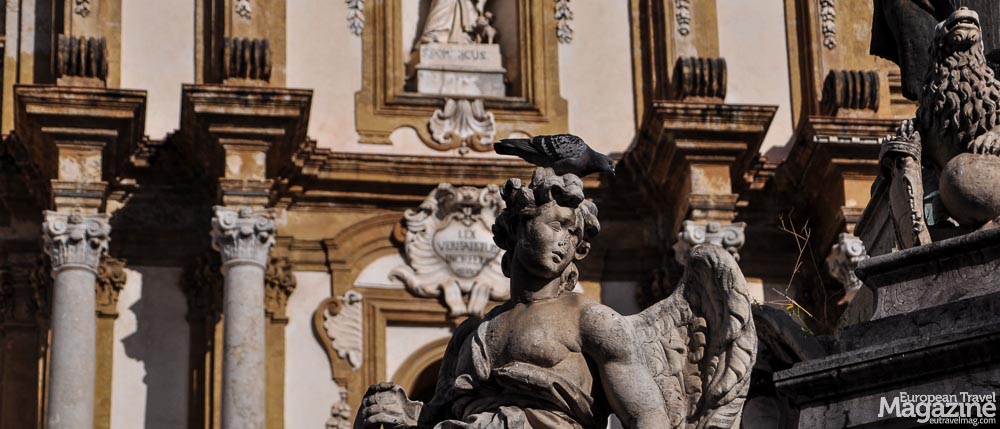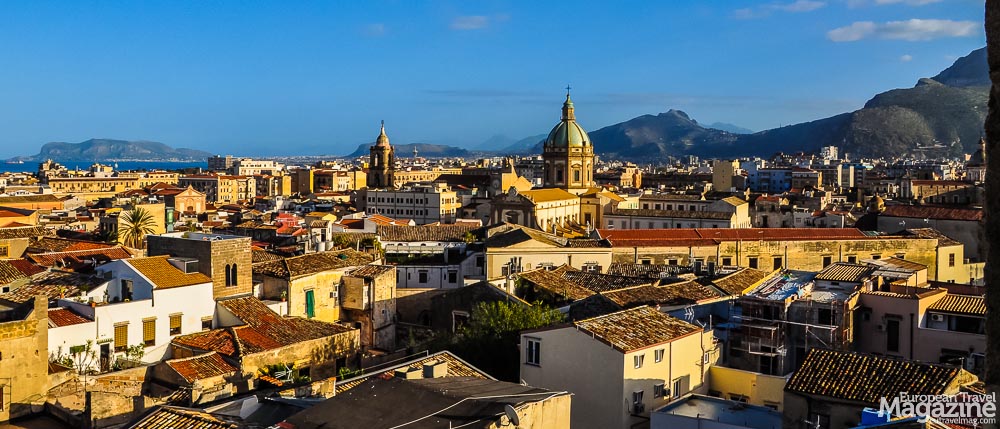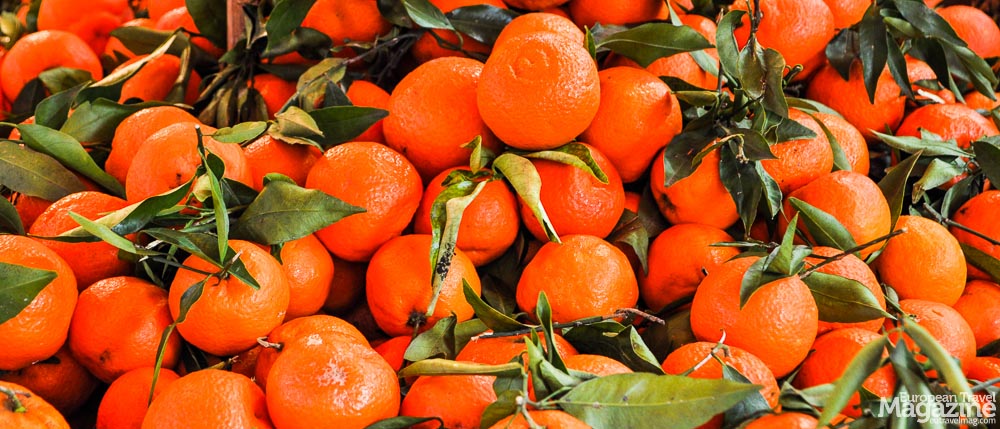While Palermo has been named Italian Capital of Culture in 2018, this interesting metropolis might prove to be one of your more rowdy Italian encounters. Ruled in turn by the Greeks, Romans, Arabs, Normans, Germans, French and Spanish before finally becoming part of the Kingdom of Italy in 1861, Palermo is a melting pot of architecture, culture and cuisine. It’s colourful, eclectic and lively. And dirt cheap compared to most other Italian metropoli.
Many travellers only have a couple of days here before continuing on their road trip of the rest of Sicily. With so much to see and so little time to do so, we’ve stripped away anything unnecessary and left you with the creme de la creme of our month of discovering Palermo.
Palermo might overwhelm you with its unkempt character, begrimed buildings and grubby streets, but you need only look beyond the decay and above the piles of garbage to acknowledge, that it’s a diamond in the rough. If you can see past the dirt, the city will reveal itself and you will be able to indulge in its wonderful Baroque architecture, yummy street food and convivial aperitivo.
Discovering Palermo
With its abundance of cultural influences over thousands of years, Palermo is an eclectic acquaintance. Its unique Arab-Norman architecture is UNESCO World Heritage classed, with Cappella Palatina in the Norman Palace and the church of Santa Maria dell’Ammiraglio as the crowning pieces. The stunning Arab-Norman cathedral is most beautiful on the outside.
You will find Palermo’s wonderful Baroque architecture at its most amplified in front of Chiesa di San Domenico, at Fontana Pretoria and Quattro Canti. The latter is not only the centre of Palermo, it’s also a beautiful Baroque depiction of the four seasons. Of nature and life. To add to all that Baroque splendour, Palermo’s wealth in the beginning of the 20th century resulted in beautiful Art Nouveau structures, such as Teatro Massimo and the cute kiosks in the square in front of the theatre.
To discover something out of the ordinary, we recommend a walk among the dead (sounds more creepy than it is!) at the fascinating Catacombs of the Convent of Capuchin Friars. Another dusty, but less scary, encounter we can recommend, is the wonderful public library, located next to Chiesa del Gesù. Set in a Baroque convent this stunning library is one of the most beautiful in Italy.
Eating Palermo
The best food in Palermo is Street Food. There, I said it. I’m sure they have fancy restaurants, but to experience the true spirit of Palermo, you have to get down and dirty. Head to the streets and head to the markets to enjoy another side of Palermo’s diverse history. The gastronomical. Check out our Guide to Street Food in Palermo for more info.
Because of their satisfying Street Food, not many restaurants made our list, but we do recommend a whole area, where you will find a vast selection of restaurants. This quarter has a charming ambiance and it’s an authentic stroll down the cobblestone alleys, finding a dinner spot in the shadow of a brilliant Baroque church in Piazza Olivella.
Drinking Palermo
Closely related to the subject above, drinking can be divided into two subclasses: caffeine and alcohol. Whereas you can pop into any cafe, restaurant, bar, diner, pizzeria or club to get an espresso, there are some places better suited than others for a traveller to sit down with a cappuccino and cornetto (if it’s before noon) or cannoli (if it’s after noon) and watch Palermitano life unfold.
We think the best place is on the pedestrianised zone of Via Maqueda, and you’ll find a lot of streetside cafes on your way north towards Teatro Massimo. The best one being right in front of the theatre. Here, you have first row seats to the theatre of life
When it’s time for the Italian custom of Aperitivo, it’s the same neighborhood you want to be in. Aperitivo is more than just a pre-dinner cocktail. It’s also snacking. The best cafés will serve you snacks when you order a beer, cocktail or glass of wine between 16.00 and 20.00. It can be focaccia bread slices with cheese, olives, chips, peanuts, or perhaps all of them together on a plate. Depends on your luck.
If you’re into more than a nibble, you can either turn Aperitivo into the starters of your dinner or, if you’re more thirsty than hungry, make Aperitivo the dinner itself. In the charming and rustic Il Siciliano, 10€ will buy you a beer, cocktail or glass of wine together with a snack board, a taglieri, with cold cuts, cheese, mini-pizzas and pasta-salad. It was enough to satiate as tall, Danish viking, but if you still feel peckish when you’re done, you can always order another round. Pretty good value for money, eh?
Shopping Palermo
Palermo is not a shopping mecca. Yes, it has the classic H&M, Zara, OVS and even the exclusive Prada, Louis Vuitton and Gucci along the same street north of Teatro Massimo, but this areas is surprisingly small and painfully sparse. I have trotted up and down these streets myself thinking “This can’t be it. I must be missing something”. It was, though.
South of Teatro Massimo, on Via Maqueda, you’ll find a lot of Street Food eateries and cafés, and a store here and there, but not a consistent shopping experience. Via Roma, running parallel with Via Maqueda but a tad more shabby and with a lot more traffic, is not the grand shopping street as it may used to be. It still has the department store Rinascente though, if you’re not afraid of perfume, with a great rooftop café on top.
Vittorio Emanuele, towards the cathedral, has surprisingly few of the normal tourist trinket shops. On this street you can also find a couple of vintage boutiques, book stores and artisans.
The really fun shopping is the ancient one: going to the markets. They won’t provide you with Levi jeans or Converse sneakers, but pretty much anything else. Foodstuff are the predominant goods but also spices, textiles, clothing, leather goods, hats, smartphone covers, jewellery and so on can be found in the Street Markets of Il Capo and Ballarò. These and the smaller, meager Vucciria are all drawn on the map.
And really; what’s the fun in going into the same chain of clothing stores, I’m sure you have at home? I bet you didn’t come to Palermo to buy something you could’ve got in your local H&M!
Instead, appreciate, that Palermo still hasn’t caught the attention of the traditional tourist. And be grateful that it still is so; it’s what makes Palermo unspoilt. When you visit again in thirty years and witness the city in a revamped baroque splendour, with spotless houses and tidy streets and find only McDonalds and H&M shops, you’ll be telling tales of the time Palermo was still a diamond in the rough.
Palermo has so much greatness to offer and I’d wish that some of its grime would get washed off, so others could acknowledge its beauty. But like a diamond in the rough, what happens when you process it, is that it loses its uniqueness. It becomes perfect, polished and uniform. No true traveller wants that for anything. We travel to broaden our minds and that can only happen, when we experience something new and different.
Let Palermo be new and different to you, may you open your heart to its beauty and fall in love with its craziness.
More info:
- Palermo official Tourism Website (in Italian)
- Sicily official tourism website
- Sicily on Italy’s official tourism website

































